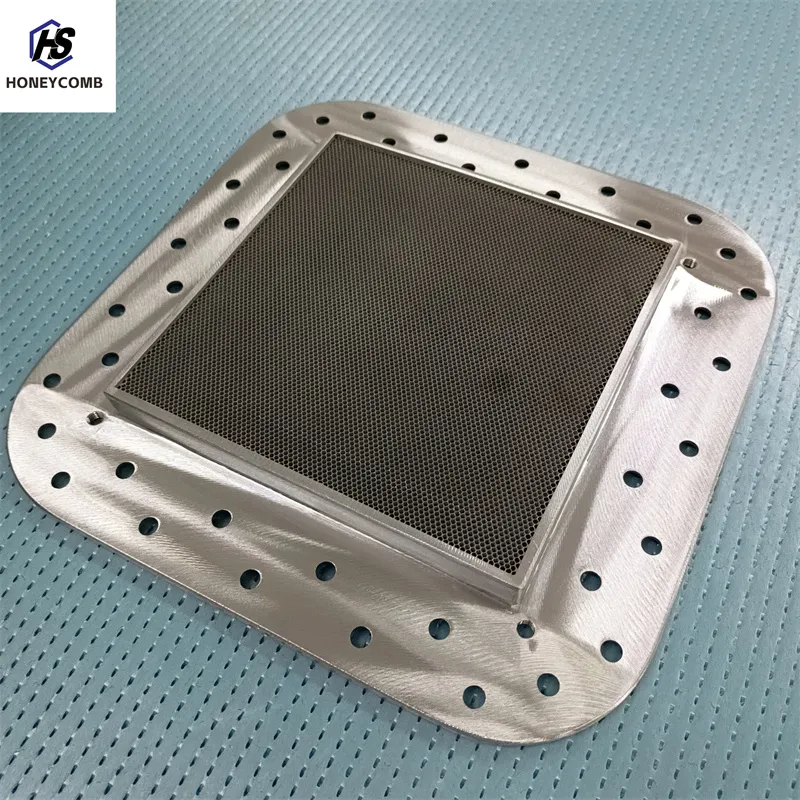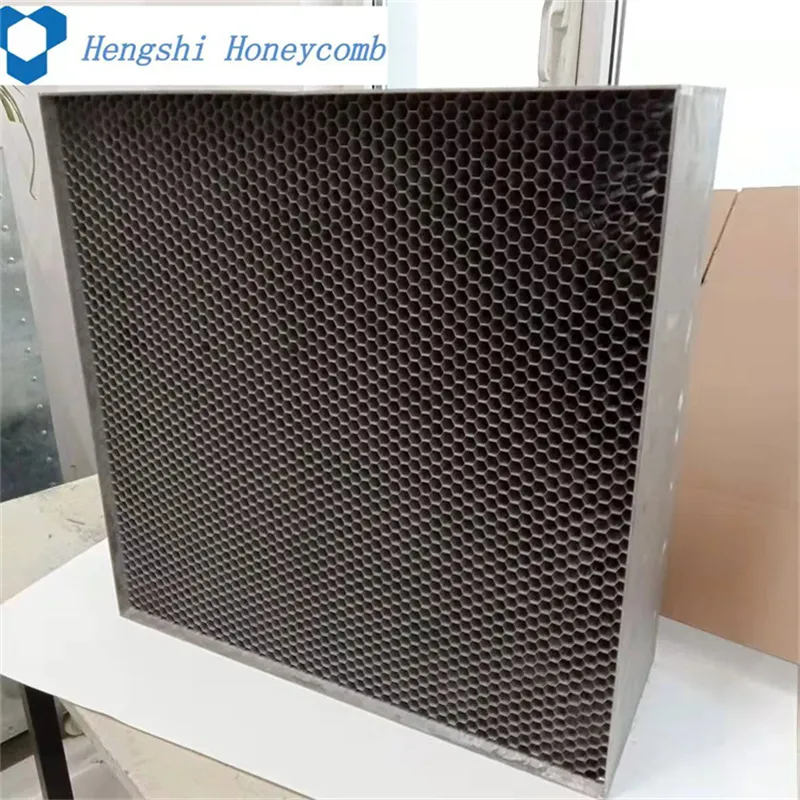
- Afrikaans
- Albanian
- Amharic
- Arabic
- Armenian
- Azerbaijani
- Basque
- Belarusian
- Bengali
- Bosnian
- Bulgarian
- Catalan
- Cebuano
- China
- China (Taiwan)
- Corsican
- Croatian
- Czech
- Danish
- Dutch
- English
- Esperanto
- Estonian
- Finnish
- French
- Frisian
- Galician
- Georgian
- German
- Greek
- Gujarati
- Haitian Creole
- hausa
- hawaiian
- Hebrew
- Hindi
- Miao
- Indonesian
- Italian
- Japanese
- Javanese
- Malay
- Persian
- Portuguese
- Punjabi
- Russian
- Spanish
- Swahili
- Telugu
- Vietnamese

High-Strength Honeycomb Metal Sheet - Military Grade Manufacturer & Specs
- Introduction: Understanding the Significance of Honeycomb Metal Sheet in Modern Industries
- Technical Advantages of Honeycomb Metal Sheets and Distinctive Properties
- Comparative Analysis: Military Grade Honeycomb Metal Sheet Manufacturer Overview
- In-depth Review: Military Grade Honeycomb Metal Sheet Specs and Performance Indicators
- Customized Solutions for Industrial Applications
- Real-world Application Cases: From Aerospace to Defense
- Conclusion: The Future of Honeycomb Metal Sheet Across Multiple Sectors

(honeycomb metal sheet)
Introduction: The Transformational Role of Honeycomb Metal Sheet
The proliferation of honeycomb metal sheet
technology marks a significant stride in the engineering and construction sectors. Renowned for their exceptionally high strength-to-weight ratio and flexible design potential, these sheets are revolutionizing how industries address material challenges. Compared with conventional solid metal panels, honeycomb configurations deliver superior load distribution and resilience against mechanical fatigue. According to recent market research, global demand for honeycomb metal structures is projected to surpass USD 2.1 billion by 2027, fueled by rapid advancements in aerospace, defense, and industrial automation. Notably, the manufacturing process of honeycomb metal sheets leverages both innovation and efficiency, enabling the fabrication of panels tailored to stringent performance requirements. This introductory overview aims to highlight the strategic importance and emerging trends surrounding this remarkable material solution.
Technical Advantages and Unique Properties of Honeycomb Metal Sheets
Honeycomb metal sheets exhibit a range of technical attributes that distinguish them from traditional materials. Foremost among these advantages is the significant reduction in weight without compromising structural integrity. Test reports illustrate that aluminum honeycomb panels, for example, can achieve weights as low as 1.8 kg/m2 with a compressive strength nearing 7.0 MPa. The unique cellular construction facilitates excellent energy absorption and impact resistance, which are critical in high-threat environments such as defense vehicles or aerospace modules.
Moreover, honeycomb panels deliver remarkable thermal and acoustic insulation, making them ideal for noise- and temperature-sensitive applications. Enhanced corrosion resistance, particularly when manufactured from stainless steel or coated alloys, further extends their lifespan, even under harsh operational conditions. Finite element analysis underscores up to 40% greater deformation resistance compared to flat sheet counterparts. The result is a material capable of conforming to complex geometries while maintaining uniform load transfer, dramatically decreasing maintenance cycles and lifecycle costs.
Comparative Analysis: Military Grade Honeycomb Metal Sheet Manufacturer Overview
Selecting the right military grade honeycomb metal sheet manufacturer is pivotal for mission-critical projects. Leading vendors differentiate themselves through advanced production techniques, robust quality assurance, and compliance with international defense standards such as MIL-STD-810 and ASTM C365. Below is a comparative table outlining core differentiators among top industry players:
| Manufacturer | Annual Capacity (sqm) | Material Options | Certifications | Globally Deployed Projects | Warranty Period |
|---|---|---|---|---|---|
| HexaTech Defense Solutions | 120,000+ | Aluminum, Titanium, Stainless Steel | MIL-STD-810, ISO 9001 | 150+ | 10 Years |
| AeroMetalworks Corp. | 98,000 | Aluminum, Hybrid Alloys | ASTM C365, AS9100 | 90 | 8 Years |
| FortiCore Structures | 75,000 | Aluminum, Stainless Steel | MIL-PRF-46146, ISO 14001 | 65 | 12 Years |
This comparison reveals not only the differences in production capacity and technical variety but also emphasizes manufacturers' dedication to after-sales support and international certifications.
In-depth Review: Military Grade Honeycomb Metal Sheet Specs and Performance Indicators
Understanding military grade honeycomb metal sheet specs is essential for systems engineers, procurement managers, and design professionals tasked with critical infrastructure. Military-grade panels are engineered for superior ballistic resistance, fire retardancy, and minimal deformation under extreme stress.
Key specifications include core material density (typically ranging from 29 to 83 kg/m3), cell sizes (3–12 mm), and panel thickness (5–50 mm). Advanced models offer skin materials with treated surfaces for chemical resistance and anti-microbial properties. For example, ballistic impact tests reveal that titanium core honeycomb panels can withstand forces exceeding 2000 J with negligible core buckling.
Additionally, thermal performance is a critical variable. Honeycomb sheets demonstrate thermal conductivities as low as 0.034 W/m·K, contributing to superior compartmentalization in high-risk military vehicles. Moreover, flame spread indices below 15, as per standardized test ASTM E84, ensure compliance with stringent fireproofing regulations.
Customized Solutions for Industrial Applications
The versatility of honeycomb metal sheet technology enables tailored solutions for an array of industries—ranging from defense and aerospace to marine, rail, and architecture. Manufacturers synergize with end-users in defining technical requirements, selecting core materials, and optimizing finishes for corrosion, impact, or acoustic performance.
Customization processes often involve computational modeling for localized stress points, rapid prototyping, and modular system integration. A prominent example is the use of honeycomb panels with variable cell geometry for stealth naval platforms, where both radar absorption and shock tolerance are paramount. Meanwhile, adaptive surface coatings—such as ceramic or PTFE—are employed to augment resistance in corrosive marine climates.
Integration compatibility remains a central consideration. Top manufacturers provide scalable formats, from small modules to full-panel assemblies up to 4.5m x 2m, ensuring seamless adaptation to both retrofitting and greenfield deployment. Whether addressing thermal regulation in satellites or energy dissipation in armored vehicles, the customization potential is virtually limitless.
Real-world Application Cases: From Aerospace to Defense
The operational impact of honeycomb metal sheets is vividly demonstrated across landmark projects in aerospace, defense, and infrastructure. In aviation, leading aircraft manufacturers utilize aluminum honeycomb cores within fuselage floors and control surfaces, achieving overall weight reductions between 15–30% and extending service intervals due to improved fatigue resistance.
An exemplary defense application involved outfitting mine-resistant vehicles with stainless steel honeycomb underbody panels, resulting in a remarkable 70% decrease in blast force transmission to crew compartments. In naval engineering, titanium honeycomb structures have enabled the construction of ultra-light bulkheads that withstand repeated hydrodynamic impacts while ensuring effective compartmentalization after projectile exposure.
Civil engineering also benefits substantially. The façade of the Harmony Metro Building, for instance, incorporates anodized honeycomb sheets that withstood seven years of coastal exposure boasting less than 5% surface corrosion. These real-world scenarios illustrate the robust adaptability and enduring value of honeycomb metal sheet technologies.
Conclusion: The Expanding Future Scope of Honeycomb Metal Sheet Solutions
As global industries continue to push the boundaries of functional materials, honeycomb metal sheet solutions will remain at the forefront of innovation. Their multi-disciplinary advantages—including lightweight resilience, dynamic customization, and superior safety metrics—set new benchmarks for performance and sustainability. Proven in both battlefield and civilian domains, honeycomb metal sheet technology will drive the next era in construction, transportation, and advanced manufacturing. By aligning with trusted manufacturers and specifying the right technical parameters, stakeholders can maximize the tangible benefits across an ever-expanding spectrum of applications.

(honeycomb metal sheet)
FAQS on honeycomb metal sheet
Q: What is a honeycomb metal sheet?
A: A honeycomb metal sheet is a panel made with a core structure resembling a honeycomb, sandwiched between metal layers. This design offers high strength and low weight. It's widely used in aerospace, military, and construction industries.Q: Why choose a military grade honeycomb metal sheet?
A: Military grade honeycomb metal sheets are built to meet strict standards for durability, strength, and performance. They are resistant to impact, corrosion, and extreme environments. These features make them ideal for defense and aerospace applications.Q: Who is a reliable military grade honeycomb metal sheet manufacturer?
A: A reliable manufacturer is one with certified quality processes and experience in supplying defense sectors. Look for factories with ISO and military standard certifications. Leading global manufacturers include Hexcel, Alucoil, and industry-specific suppliers.Q: What are common military grade honeycomb metal sheet specs?
A: Typical specs include aluminum or stainless steel core, thickness from 5mm to 50mm, and high compressive strength. They must often comply with MIL-STD or DIN standards. Fire resistance and corrosion protection are also common requirements.Q: How can I request a quote for custom honeycomb metal sheets?
A: Contact the manufacturer directly with your required dimensions, material, and performance specs. Most offer online forms or sales contacts for custom inquiries. Expect quotations to include lead time and material certifications.Products categories
-
Why Vented Aluminum Honeycomb Is Leading the Way in Shielding and Ventilation SolutionsNewsJul.18,2025
-
Why Stainless Steel Honeycomb Panel is the Ultimate Choice for High-Tech Shielding and ProtectionNewsJul.18,2025
-
Why Honeycomb Strips Are Revolutionizing High-Speed Sealing SolutionsNewsJul.18,2025
-
Shielded Glass Innovation Powers the Future of Electromagnetic ProtectionNewsJul.18,2025
-
Precision Starts Here: Revolutionizing Airflow Control with Honeycomb Wind Tunnel SolutionsNewsJul.18,2025
-
Elevate Industrial Performance with Precision-Engineered Steel Honeycomb Core SolutionsNewsJul.18,2025
-
Vented Aluminum Honeycomb: A Smart Shield for Airflow and EMI ControlNewsJul.11,2025















